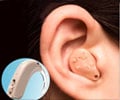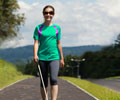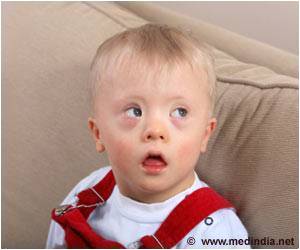Deaf infants of deaf parents may be more attuned than hearing infants to the social and visual signals of others, stated new study.

‘Eye gaze helps infants communicate. Through everyday interactions, eye gaze establishes a social connection between parent and child and is linked to early word learning.’





“Children adapt to the people who communicate with them,” said Rechele Brooks, a research scientist at I-LABS and lead author of the study. “Whatever your social context is, you’re learning from the people around you. Children thrive through interactions with other people. This work shows that children tune into social cues in their environment starting from early infancy.”
While gaze following in hearing infants has been studied, the behavior hasn’t been formally examined in Deaf infants.“Informal observations of Deaf infants interacting with their Deaf parents have suggested that these infants possess keen control over their eye-gaze behavior. To evaluate this, we set up a controlled experiment and tracked the gaze behavior of multiple infants,” said Jenny Singleton, a linguistics professor at the University of Texas at Austin and co-author of the study. Fewer than 10% of Deaf infants have Deaf parents, thus the research team needed to recruit Deaf infants from across the country.
For this study, 12 Deaf infants participated, along with 60 hearing infants of the same age. Both groups had natural experience with language from birth with their families – the Deaf infants with visual language (American Sign Language) and the hearing infants with spoken language. During the study, each infant sat with a parent, facing a researcher across a table.
The researcher set up the room with two objects, one on either side of the infant. Silently, the researcher then looked to one of the two objects, and a camera recorded the infant’s response. Each trial was objectively “scored” based on where the infant directed their gaze.
Scores showed that the Deaf infants were nearly twice as likely as hearing infants to accurately follow the gaze of an adult. Younger Deaf infants (those between 7 and 14 months old) were even more likely to do so than hearing peers.
Advertisement
In the experiment, Deaf infants were also more apt to look back at the adult after following the adult’s gaze. This “checking back” behavior is a form of communication, which can indicate that the infant is seeking more information from the adult. Hearing infants can learn from both what an adult looks at and what the adult verbally says about it; Deaf infants must rely on visual cues.
Advertisement
There is a more general lesson about human nature, too, Meltzoff said: “The human mind and brain flexibly adapt to achieve our fundamental birthright — connections to others.”
The study was funded by the National Science Foundation, the National Institute of Child Health and Human Development, the Virginia Merrill Bloedel Hearing Research Center and the I-LABS Innovative Research Fund.
For more information, contact Brooks at recheleb@uw.edu.
Source-Newswise












